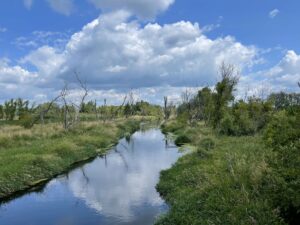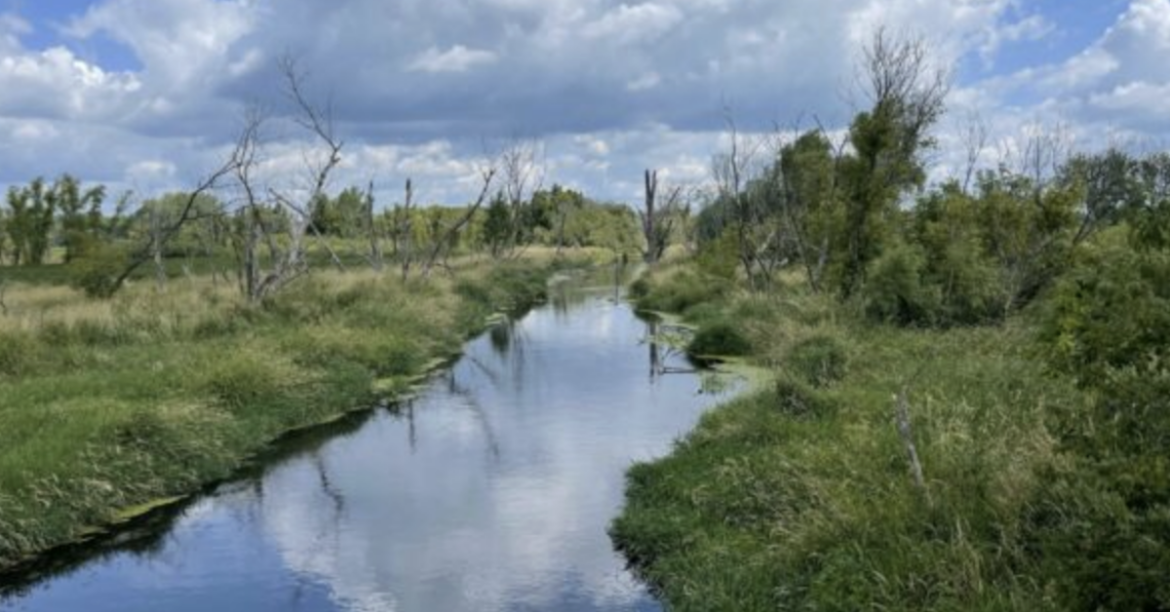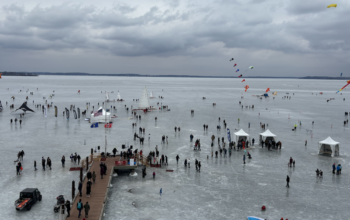Hannah Ager wakes up excited for class because her studies often take her to different lakes and waterways across the state.
As a current graduate student in the water resources management program at UW–Madison, Agner was able to go on several field trips through her class in limnology, the study of lakes.
“We were out on Lake Mendota a few times, we went to Black Earth Creek a few times and we went up to northern Wisconsin to Trout Lake to the UW research station,” Agner said. “How do you not like spending class time out on the lake?”
Over the last 60 years, more than 500 people have taken part in the water resources management master’s program at UW–Madison. Students in this program have access to field-trip style classes, along with the opportunity to work on a two-year group project to improve water quality and resource management in the Madison area or elsewhere in Wisconsin. The program and its students have undertaken dozens of projects in an attempt to protect the state’s most valuable natural resource: water.
This program aims to provide students with an education on prominent issues, as well as with real-world experience and connections. It also extends beyond the classroom to serve local communities that are looking for help and can benefit from students’ recommendations to address the problems they are facing.
Jim Miller, who celebrated his 20th anniversary as the graduate advisor for the water resources management program this past summer, calls the students studying limnology at the Nelson Institute, UW–Madison’s school for environmental studies, the institute's “best representation of the Wisconsin Idea. These students are working for two years doing something for a community in a watershed,” he said.
Agner and the six members of her group have spent their time working on a project addressing flood issues along Koshkonong Creek, which stretches on the east side of Dane County from Sun Prairie all the way to Lake Koshkonong.

“We want to help you save your money, we want to save the land, but we also want to preserve the ecology of the area,” Agner said.
For this project, the students looked at five main areas of study: stakeholder engagement and outreach, flood modeling, wetland assessment, sediment assessment and water quality assessment. Agner chose to work primarily on the wetland and sediment assessment sections of this project.
After recently completing a mapping class in the geography department, Agner was happy to join the wetland section because it would require “a lot of work on mapping where those wetlands are,” she said. “I wanted to apply those newly acquired skills, and that’s where it was most applicable.”
She was also a good person to tackle these two areas thanks to her job as a policy analyst in the water monitoring section at the Department of Natural Resources. Agner explained that many of the contacts the department needed were for the sections on wetlands and sediment assessments, and her work connections helped identify them.
Although Agner has enjoyed working on this project, it was not something she or her group members chose to do. In fact, projects are predetermined before students even step foot on campus.
“We get solicitations from an agency, village, municipality or a ‘friend's of’ group,” Miller said. “Like, ‘Hey, we’ve had this issue, we know about your water resources management program, would this seem to be a viable workshop for your program?’”
If it does seem like a viable option, the project will be assigned to the incoming cohort of fall students. The students then have scheduled class time to work on their projects along with their usual curriculum requirements.
These requirements are split into three categories: Category A focuses on natural science and technology, Category B focuses on water resources institutions and public decision-making processes and Category C focuses on analytical and design tools in water resources.
Despite her current interest in water resources management, Agner received her undergraduate degree in psychology from Texas Tech University. She doesn’t feel disadvantaged by not having a background in natural resources.
“I don’t think I was held back or fell behind in any way… my background helped me with Category B,” she said. “The people that came in with a natural resources background may not have had as much experience with that category.”
Kayla Wandsnider, a critical infrastructure planner for Wisconsin Emergency Management and a former water resources management student, also recommended students take a wide variety of classes – even if it means auditing them.
“Try taking as many different fields or classes in different disciplines as you can because you never really know what you might like or not,” Wandsnider said.
This advice comes out of Wandsnider’s own experience with a class on hydro science. After realizing the class may not entirely be for her, she dropped out and audited it instead.
“Hydro sciences, like hydrology and engineering, are very, very technical,” she said. “So having the ability to understand at least a little bit of technical work has been invaluable.”
That being said, Wandsnider walked away from her time in the water resources management program with so much more than just the capacity to, even somewhat, understand complex and technical topics.
Wandsnider’s project was focused on flood resilience in the Coon Creek watershed, which runs through Vernon, Monroe and La Crosse Counties in southwestern Wisconsin. She explained that her group was tasked with attempting to understand what flood resiliency looks like in that area following the 2018 floods that blew out dams across Coon Creek.
“It was really eye-opening into the issues that rural communities are facing,” she said. “It provided a foundation of how to go about entering a community, giving them help and asking what's wrong.”
Between the two-year projects and variety of classes, the water resources management program has a lot to offer its students. However, the application pool for this program has decreased in the last five years.
“We wish it were bigger,” Miller said. “Water is very important, and this is one of the best states, if not the best state in the nation, to study water. We’ve got over 15,000 lakes, I want to say over 8,000 miles of rivers and streams, the Great Lakes basin and the Mississippi basin. Water is huge here. Why don’t we have more people studying it?”
According to Miller, there are usually eight to 12 students coming in each fall, but last fall, there were only three.
“Thank goodness we do spring admissions as well,” he said. “We added another six last spring, so we were able to put together an adequate size project team.”
Miller admits that this downtick in applicants may be because people simply just do not know it exists and it needs better promotion.
“It’s a really good program for people to be aware of. We’d like to have more people pursue it, and if they have any questions, just ask me,” Miller said.
To learn more about this graduate program or to get in contact with graduate advisor Jim Miller, please visit the water resources management website.






